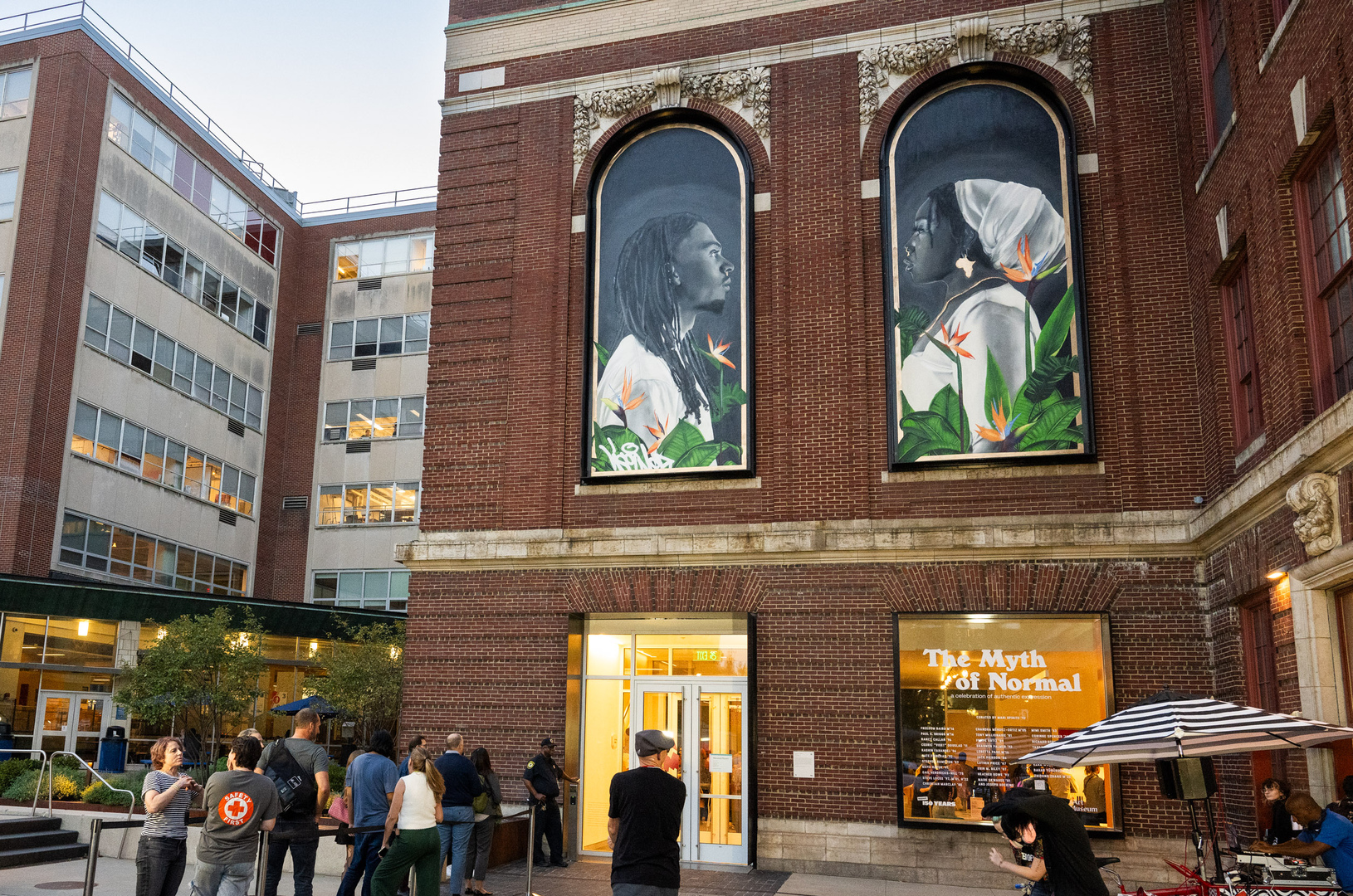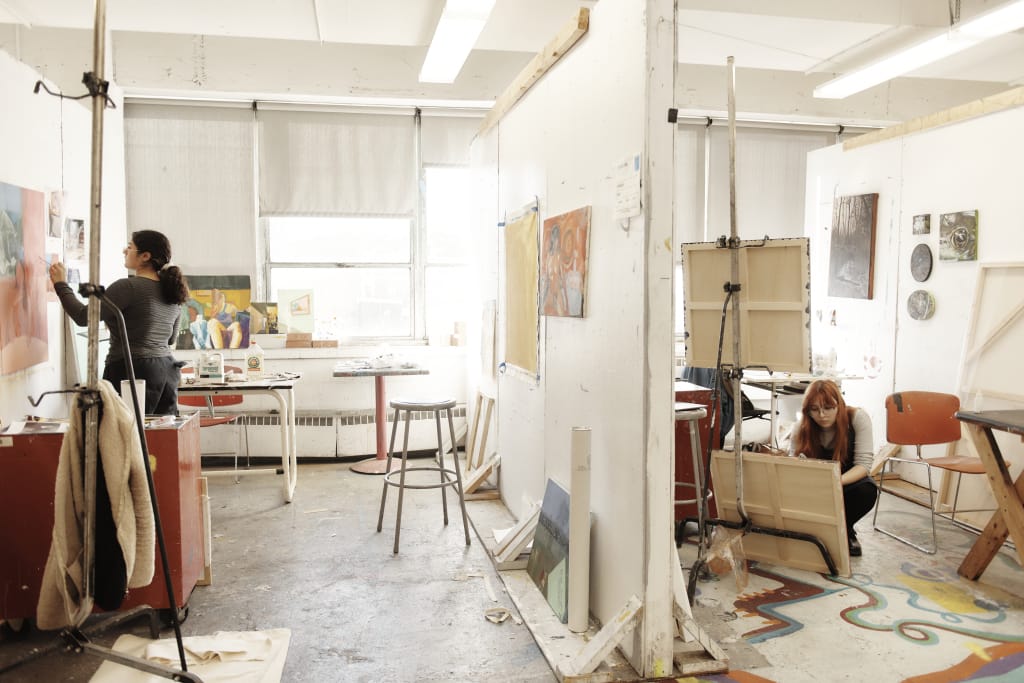

Displacement opens at MAAM
on June 27th, 2024.
People have been antagonizing the environment. Now the environment is pushing back — hard. MAAM Executive Director Lisa Tung explains how the museum’s exhibition, Displacement, explores what has become an existential push and pull.

Imani Jaqueline Brown, What remains at the ends of the earth?, 2022. Dimensions variable. Installation view, 12th Berlin Biennale, 2022. Photo: dotgain.info.
Written by Jen Roy
Q: It’s no secret that our built world and our natural world are vying for space, for primacy. We construct homes on the coast, and the sea swallows them up in angry storms. What made you decide to curate an exhibition that looks at this ongoing fray?
Lisa Tung: Last summer there were hardly any stone fruits in New England. The summer before that there were wildfires that lit up the sky, crazy orange colors. Cherry trees are blossoming a month earlier than ever before. Winters don’t get cold enough or long enough, and plants, flowers, and vegetables don’t know what to do. We used to exist in harmony with nature, but now we have burned so much coal, oil, and methane that it’s upsetting the balance. The natural world isn’t pleased. It’s fighting back.
This is in the zeitgeist — people are talking about climate change. And artists are looking at why certain things are happening that didn’t happen 30 years ago and bringing what they see to light, whether through textiles, sculpture, or other media. So the timing seemed right. One work in the exhibition, a video entitled SANDCASTLES by Ellie Schmidt, looks specifically at the implications of assuming the shoreline is always going to stay put and that what people build there will remain safe.

Ellie Schmidt, SANDCASTLES, 2020. Video, sound. 15:05 minutes. Courtesy of the artist.
Q: When we think about our assault on the environment, we tend to think that the problem naturally falls into the realm of science. How does bringing it into the realm of art change the understanding?
Lisa Tung: Artists are the best storytellers. We need scientists, of course, and some of the artists in the show work very closely with them. One example is Katie Paterson. She collaborated very closely with scientists to figure out what the first forests may have smelled like 385 million years ago. She also learned what the scent of the last forest might be if it were to burn and go extinct. Her work that ensued, To Burn, Forest, Fire, consists of incense sticks that will be lit on select Thursday evenings, when the museum is open late, and can both transport people back in time to that first primordial forest and also ahead to the last remaining one. That’s much easier, much more visceral, for the average visitor than diving into data and numbers and graphs and charts. It tells them the story in a way that captures the imagination.

Katie Paterson. To Burn, Forest, Fire, 2021/2024 (Originally commissioned by IHME Helsinki). Bespoke incense sticks. Courtesy of the artist. Photo: Veikko Somerpuro.

Katie Paterson. To Burn, Forest, Fire, 2021/2024. Lit on select evenings, when the museum is open late.

Maya Watanabe. �ܳ��̀��, 2024. Single channel video installation. 18 minutes. Courtesy of the artist, Tegenboschvanvreden, and 80m2 Livia Benavides.
Q: How did you decide which artists to include?
Lisa Tung: That’s the secret sauce, isn’t it? Every curator’s process is a little different. In some climate-focused exhibitions, the words have been a little bit more severe, such as “catastrophe” or “crisis.” At MAAM, we didn’t want people to feel judged. As the only free contemporary art museum in Boston, we want people of all ages to come in and experience something revelatory, to feel inspired, whether they are a serious art collector or a fifth grader. There’s a video by Maya Watanabe, �ܳ�ù��, of a wolf puppy that was frozen in permafrost for 57,000 years. Except of course the frost was not permanent. It’s thawing, and because of climate change now we’re seeing a prehistoric creature. A child is going to get something different from that than an adult.
But either way we want them to be able to take it and run with it, to build on the conversation started here by the artists’ narratives.
Q: A couple of the works in the exhibition focus on the fact that our effect on the environment particularly hurts marginalized populations. Can you talk about this?
Lisa Tung: One of the works, Imani Jacqueline Brown’s installation, What remains at the ends of the earth?, gets at this by looking at the intersecting histories of land inhabited by Black Louisianans. Via a circular video projection and hanging prints, it likens the earth to a Black body, how it has been overworked, exploited. Petrochemical plants and pipelines are in the same places that plantations were.

LOT-EK. Hosfelt Gallery ���ʱ�������installation view, 2023. Deconstructed shipping containers, wood. Courtesy Hosfelt Gallery.
Q: The exhibition is multi-sensorial — not just about what we see but also about what we smell, as you described, what we hear, and even about how we sense ourselves in space. How does that inform the visitor experience?
Lisa Tung:
If an exhibition brings you in through all of your senses, it’s activating all the ways you receive and compute information. In addition to sight, sound, and smell, there’s also touch here—in this case, having to do with shipping containers and being able to physically engage with them. As human consumption keeps growing, the number of shipping containers increases; there is no accurate count of how many containers there are globally, but estimates range between 50 and 170 million. A single container can hold 20 refrigerators. Architectural design studio LOT-EK is finding other uses and has repurposed them into seating and lounging areas. You can have a painting of shipping containers, but sitting on a shipping container bench—as the exhibition will allow you to do—adds a new experience.
Q: What’s the meaning of the We Are the Asteroid pin that each visitor can take?
Lisa Tung: That’s the work of Justin Brice. Justin is an activist artist. His point is that asteroids collide into something and forever alter it. The pin is to remind us that as humans, we have this great power that can transform our world for better or for worse. There will also be a sign on the MAAM plaza by Justin — like a LED road sign that you see driving down the highway, which might say “Detour” or “Road work ahead.” Justin’s will have cautions such as “Warning: High CO2” or “Goodbye Arctic Ice.”
Q: If the viewer can take away only one message from Displacement, what would you want that message to be?
Lisa Tung: That they can make a difference.


Displacement opens at MAAM
on June 27th, 2024.
For over 40 years, ������ϱ� New England has been one of the nation’s top summer residency programs.
View story
������ϱ� instructor and director of ‘The Lab,’ Clint Baclawski is an accomplished artist who has won numerous awards, exhibited in the U.S. and abroad, and attended residencies in Venice, Italy, and Wassaic, NY.
View story